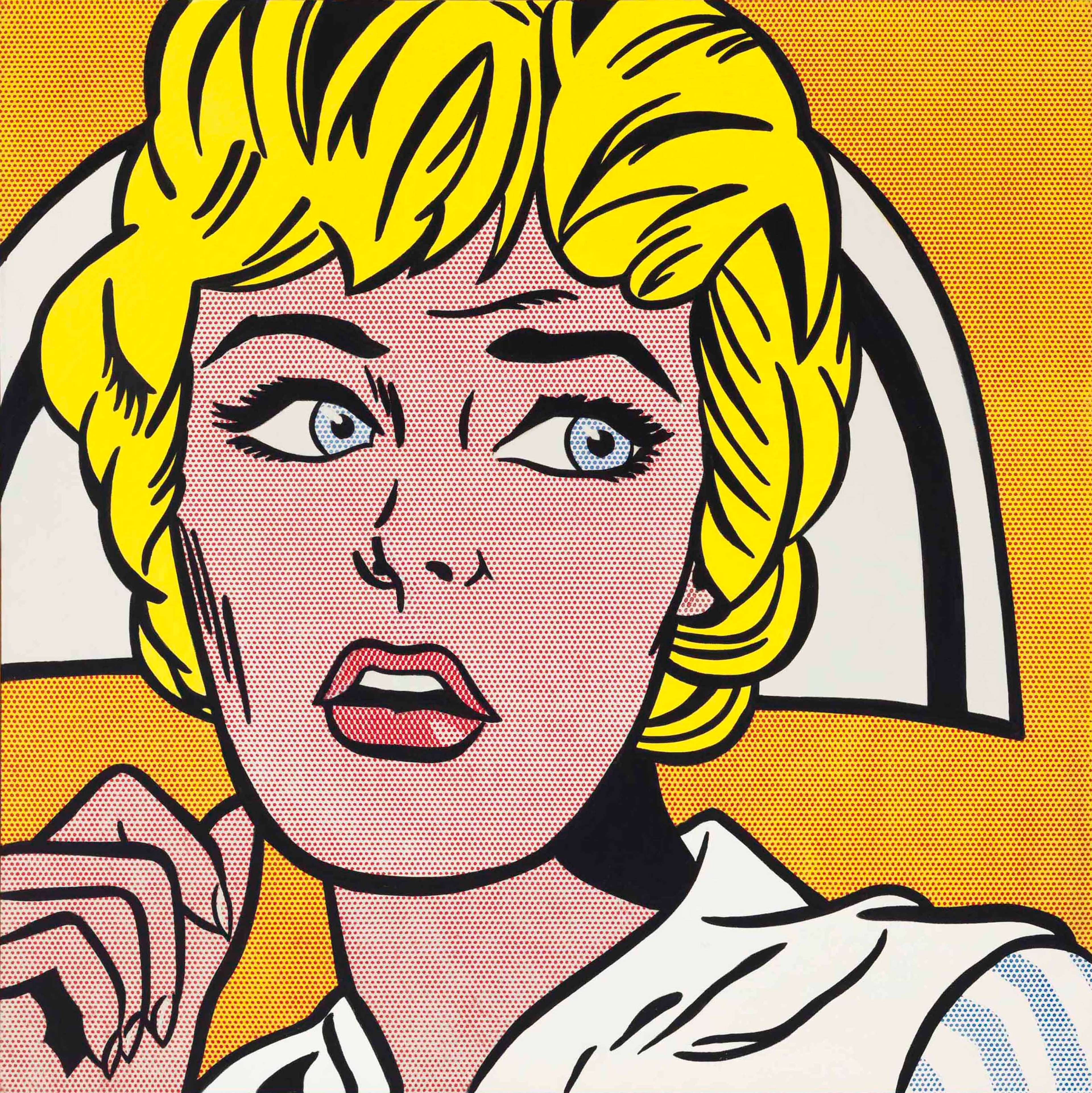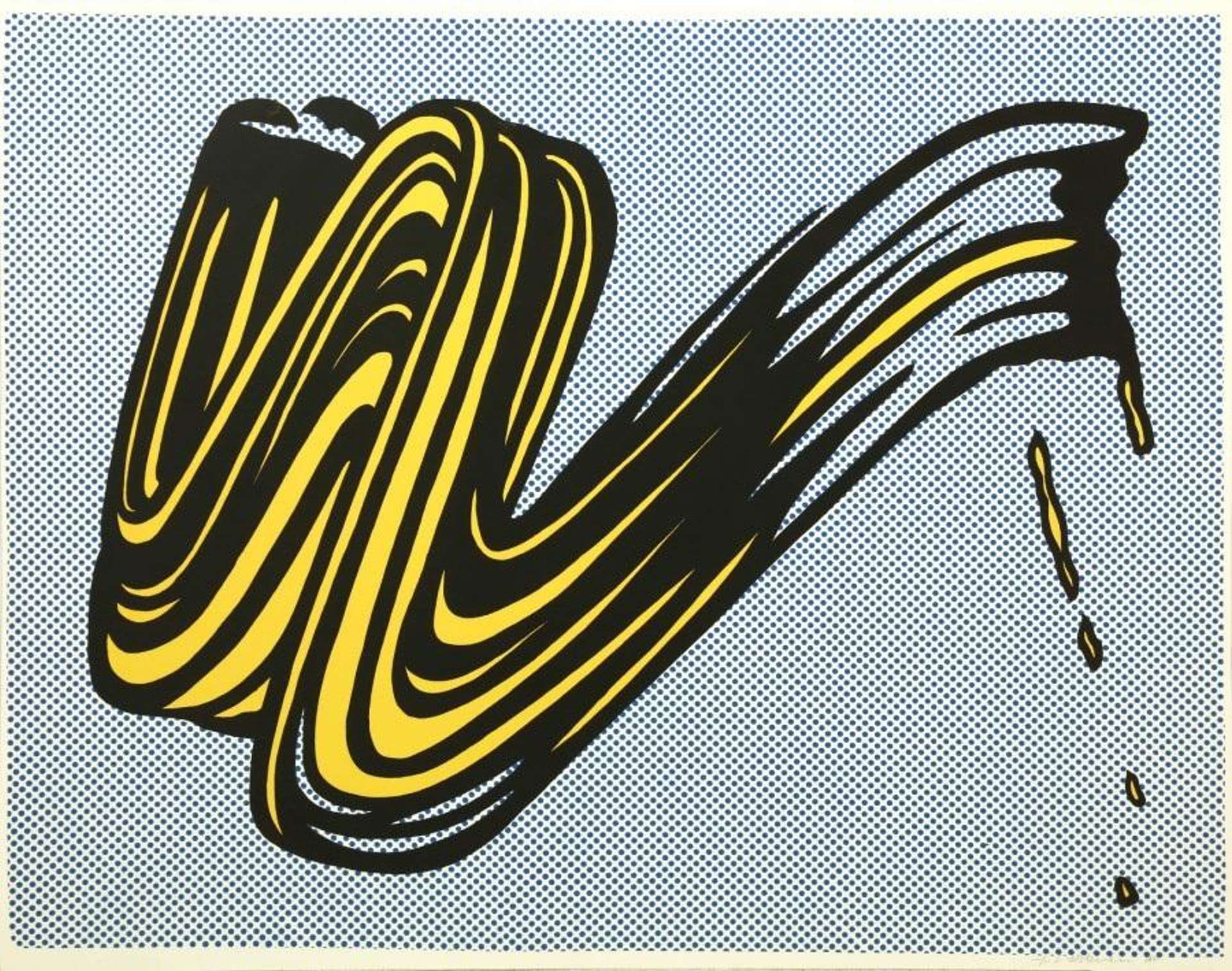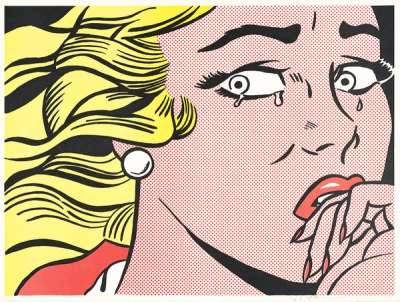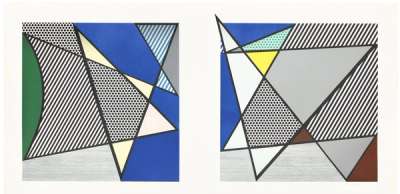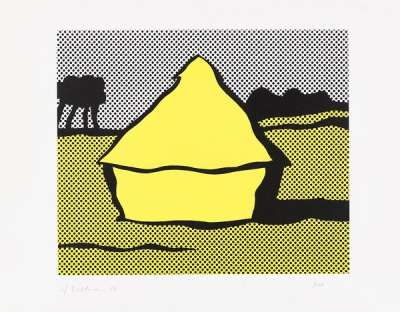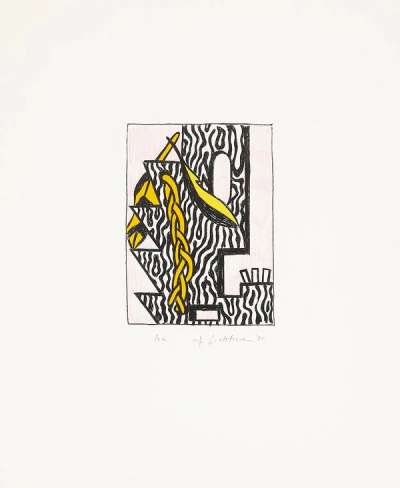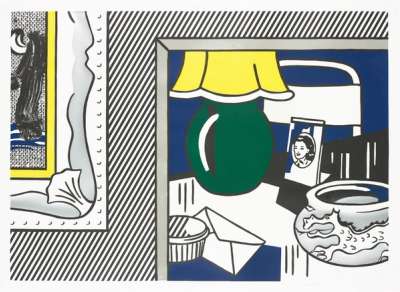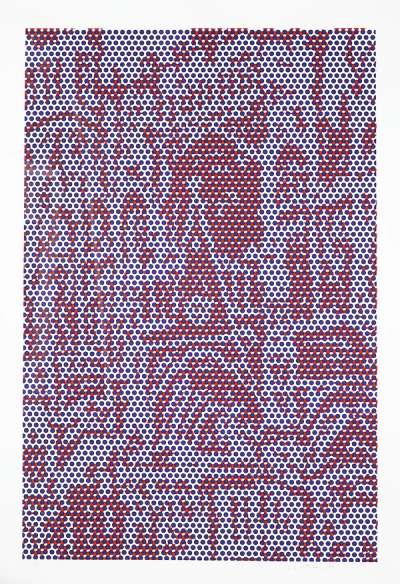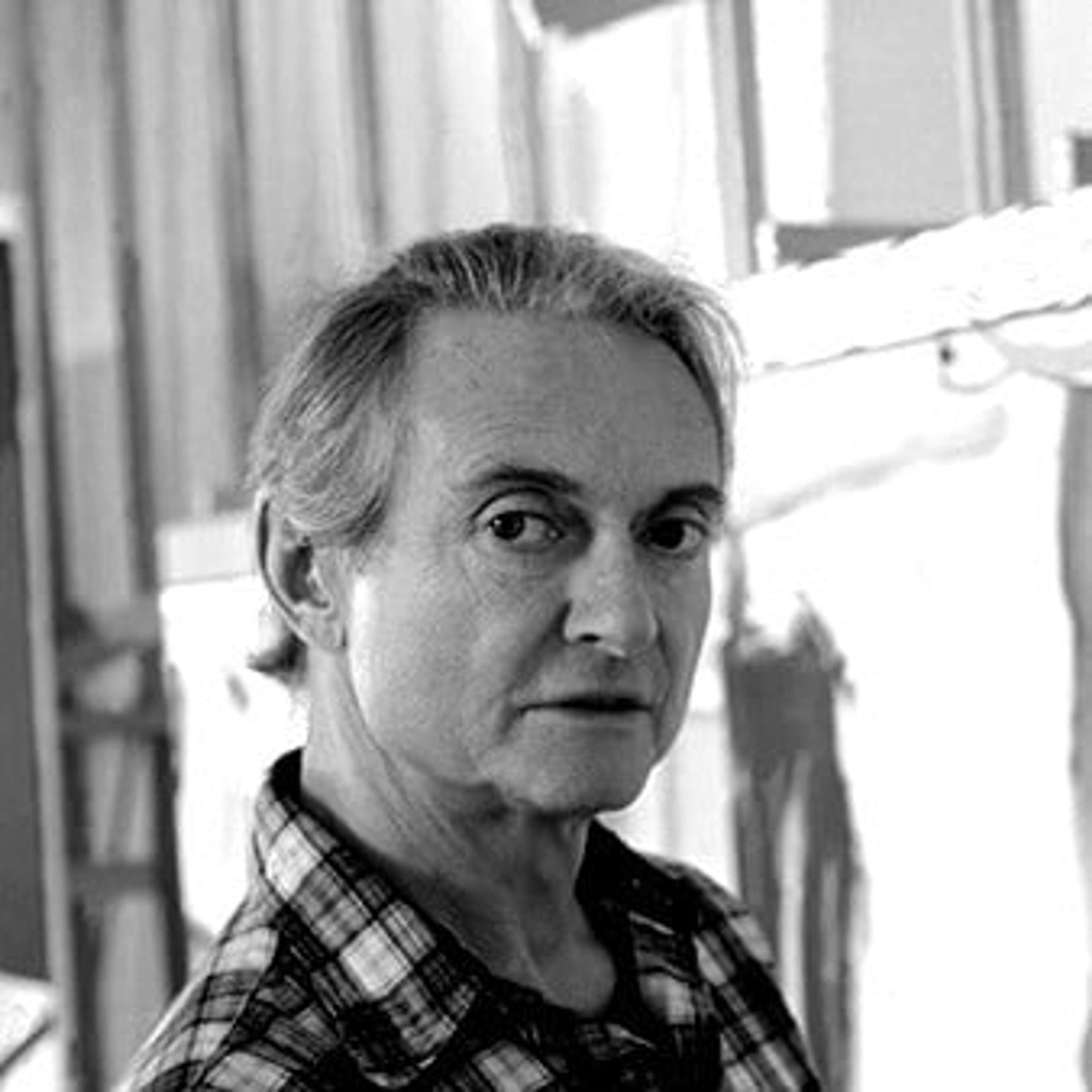The Ultimate Guide to Roy Lichtenstein: A-Z Facts

 Shipboard Girl (Corlett II.6) © Roy Lichtenstein 1965
Shipboard Girl (Corlett II.6) © Roy Lichtenstein 1965
Roy Lichtenstein
287 works
Iconic pop art pioneer, Roy Lichtenstein brought comic-strip aesthetics into the fine art world, challenging traditional notions of high art.
How did Roy Lichtenstein gain fame? Where was he born? Here are some facts about the artist who transformed visual culture with his bold, satirical works.
A is for Artistic Beginnings
Roy Lichtenstein's artistic journey began with a passion for fine art. Before gaining fame as a leading figure of the Pop Art movement, Lichtenstein immersed himself in the world of creativity and education. In his last year of high school, he enrolled in summer classes at the Arts Student League of New York.
B is for Ben-Day Dots
One of the most distinctive features of Roy Lichtenstein's iconic style is his masterful use of Ben-Day dots. Inspired by the printing process found in comic books and newspapers, Lichtenstein employed these tiny, coloured dots to create depth, texture, and shading in his artwork. By strategically placing the dots in various sizes and patterns, he achieved a visual effect that mimicked the mechanical printing process.
C is for Comic Books
Roy Lichtenstein's profound connection to comic books served as a spring of inspiration for his groundbreaking artwork. Influenced by the vibrant and visually captivating world of comics, Lichtenstein elevated the genre to the realm of fine art. His paintings often featured enlarged panels from comic strips, with bold black outlines, vibrant primary colours, and exaggerated facial expressions. By appropriating and recontextualising this popular imagery, Lichtenstein challenged the boundaries between high and low culture, inviting viewers to reconsider the artistic value of everyday sources.
D is for Drowning Girl
Among Roy Lichtenstein’s most iconic works is the emotionally charged painting Drowning Girl (1963). This masterpiece encapsulates the artist's ability to capture powerful narratives with a touch of irony. The painting features a distressed woman, her head partially submerged in water, accompanied by a speech bubble that reads, "I don't care! I'd rather sink—than call Brad for help!" The juxtaposition of the tragic scene with the defiant dialogue adds a layer of complexity to Lichtenstein's work. Drowning Girl showcases his mastery in combining melodramatic storytelling with his signature Pop Art style, further solidifying his position as a trailblazer in contemporary art.
E is for Exhibition at the Leo Castelli Gallery
In 1962, Roy Lichtenstein had a pivotal moment in his career with his first solo exhibition at The Leo Castelli Gallery in New York. This exhibition marked a significant milestone, propelling Lichtenstein into the forefront of the art world. It showcased his distinctive style that merged elements of popular culture with fine art. Lichtenstein's bold, graphic paintings, inspired by comic books and advertisements, captivated viewers and ignited critical acclaim. The exhibition at The Leo Castelli Gallery cemented Lichtenstein's reputation as a leading figure in the Pop Art movement and provided a platform for his future artistic innovations and achievements.
F is for Fine Art
While Lichtenstein is primarily known for his association with Pop Art, his deep appreciation for fine art is often overlooked. Lichtenstein's artistic prowess extended beyond the realm of popular culture. Throughout his career, he drew inspiration from art history, referencing iconic works by artists like Picasso and Monet in his own paintings. He skillfully integrated elements of traditional fine art into his Pop Art style, creating a unique fusion of high and low culture.
G is for Girl With Hair Ribbon
Girl With Hair Ribbon (1965) stands as a prominent example of Roy Lichtenstein's artistic prowess. In this masterpiece, Lichtenstein's bold use of lines and primary colours comes to life, portraying a stylized image of a woman with exaggerated features. The painting exemplifies his signature Pop Art style and showcases his ability to transform mundane subjects into captivating works of art.
H is for Humour
Lichtenstein's art was infused with a delightful sense of humour. Through his use of comic book imagery, he playfully challenged the seriousness of the art world and embraced the absurdity of popular culture. Lichtenstein's paintings often featured exaggerated expressions, ironic dialogues, and humorous situations.
I is for Impact in Contemporary Art
Lichtenstein's impact on contemporary art cannot be overstated. His groundbreaking approach to merging popular culture with fine art paved the way for subsequent generations of artists. Lichtenstein's bold use of comic book imagery, Ben-Day dots, and vibrant colours challenged traditional notions of what constituted art. His work not only redefined the boundaries of artistic expression but also ignited a broader conversation about the influence of mass media on society. Lichtenstein's legacy continues to resonate, with countless artists inspired by his fusion of high and low culture, his innovative techniques, and his critical exploration of the visual landscape of the modern world.
J is for Japanese Influence
While Roy Lichtenstein is often associated with American popular culture, he also drew inspiration from Japanese art. The influence of Japanese woodblock prints, known as ukiyo-e, can be seen in some of his works. Lichtenstein admired the bold lines, flat colour areas, and compositional balance found in these traditional prints. He incorporated elements of ukiyo-e, such as stylised landscapes and simplified forms, into his own art. This infusion of Japanese aesthetics added a unique dimension to Lichtenstein's style, demonstrating his appreciation for diverse artistic traditions and further enriching his body of work with a global perspective.
K is for Knock Offs
Lichtenstein’s artistry was not without controversy, as he faced criticism for his appropriation and reinterpretation of existing imagery. Some accused him of creating mere "knock-offs" by borrowing from comic book panels and popular advertisements. However, Lichtenstein's genius lay in his ability to transform these borrowed images into original works of art through his distinctive style.
L is for Lichtenstein Foundation
The establishment of the Roy Lichtenstein Foundation in 1999 stands as a testament to the artist's enduring legacy. The foundation was created to promote the understanding and appreciation of Lichtenstein's work, as well as to preserve his artistic legacy for future generations.
M is for Museums
Lichtenstein’s artwork has found a home in prestigious museums worldwide, cementing his status as an influential artist. His vibrant and iconic pieces can be seen in renowned institutions such as the Museum of Modern Art (MoMA) in New York, Tate Modern in London, and the Centre Pompidou in Paris. Lichtenstein's presence in these esteemed museums allows his work to reach a global audience and ensures its preservation for future generations.
N is for New Techniques
Lichtenstein was not only a master of his signature style but also a constant innovator in terms of technique. Throughout his career, he experimented with various methods to expand the possibilities of his artistic expression. Lichtenstein even ventured into sculptural forms, translating his two-dimensional style into three-dimensional creations.
O is for Overcoming Criticism
Lichtenstein faced his fair share of criticism throughout his career, particularly in the early years when his work challenged conventional notions of fine art. Some dismissed his art as mere commercial reproduction or lacking in originality. However, Lichtenstein remained undeterred and continued to push forward with his distinctive style. Over time, his work gained recognition and acclaim, breaking through the barriers of scepticism. Lichtenstein's perseverance and unwavering belief in his artistic vision allowed him to overcome his critics and solidify his place in art history as a pioneering figure of the Pop Art movement, inspiring countless artists in the process.
P is for Parodies
Parodies played a significant role in Lichtenstein’s artistic repertoire. Drawing inspiration from popular culture, Lichtenstein skilfully parodied the world of advertising, consumerism, and mass media. By appropriating and reinterpreting iconic images, he satirised the clichés and conventions of his time. Lichtenstein's parodies questioned the authenticity and sincerity of popular imagery, inviting viewers to reconsider the messages conveyed by mass media.
Q is for Questions of Authenticity
Lichtenstein’s work often raises intriguing questions of authenticity in the art world. With his meticulous replication of comic book panels and commercial imagery, some critics questioned the originality and artistic merit of his creations. However, Lichtenstein's art goes beyond mere imitation. Through his distinct style, meticulous craftsmanship, and unique reinterpretation, he transformed familiar images into something entirely new and thought-provoking. Lichtenstein's works possess a powerful aura and narrative that resonate with viewers on multiple levels.
R is for Reflection Series
His Reflection series stands as a remarkable exploration of his artistic range. Created in the late 1980s and early 1990s, these works showcase Lichtenstein's ability to deconstruct and reconstruct imagery with a twist. The series features fragmented and distorted mirrors reflecting scenes from his earlier paintings.
S is for Sculpting
Lichtenstein's artistic vision extended beyond the canvas as he delved into the realm of sculpture. His sculptures, like his paintings, reflect his distinctive Pop Art style and mimic the appearance of brushstrokes frozen in three-dimensional form. Lichtenstein's sculptures often feature exaggerated shapes and vibrant colours, bringing his iconic comic book-inspired imagery to life in a new dimension.
T is for Teaching
Lichtenstein’s impact on the art world extends beyond his own artwork, as he was also a dedicated and influential teacher. From 1960 to 1963, Lichtenstein taught at Rutgers University in New Jersey, where he inspired and mentored a new group of artists. His teaching style emphasised experimentation, conceptual rigour, and the exploration of popular culture.
U is for Unforgettable
Lichtenstein’s impact on the art world is truly unforgettable. His distinctive style, characterised by bold lines, vibrant colours, and comic book imagery, has become iconic. Lichtenstein's art captures the essence of the Pop Art movement and continues to resonate with audiences of all ages. His ability to blend high and low culture, his satirical wit, and his innovative techniques have made him a household name in contemporary art. Lichtenstein's influence on popular culture, his critical exploration of visual communication, and his enduring legacy as an artistic trailblazer ensure that his contributions to the art world will never be forgotten.
V is for Visual Impact
Lichtenstein’s art is renowned for its remarkable visual impact. His works command attention with their bold, larger-than-life compositions, vivid colours, and striking use of Ben-Day dots. Lichtenstein's ability to transform everyday objects and comic book panels into captivating visuals is a testament to his mastery as an artist. His distinct style, characterised by sharp lines and precise details, creates a visual language that is instantly recognisable and captivating. Whether through the expressive faces of his characters or the dynamic energy of his brushstrokes, Lichtenstein's art leaves a lasting visual impression that resonates with viewers long after they have experienced it.
W is for War and Romance
War and romance were recurring themes in Lichtenstein's body of work. Drawing inspiration from comic book narratives, he depicted the intense emotions and dramatic moments associated with these subjects. Lichtenstein's artworks often portrayed heroic soldiers, damsels in distress and explosive action scenes, all executed with his signature style. By appropriating and reimagining these familiar tropes, he shed light on the glamorisation and idealisation of war and love in popular culture.
X is for (E)xperimental
In the realm of experimental art, Lichtenstein's creativity knew no bounds. He fearlessly embraced new techniques, materials, and concepts throughout his career. Lichtenstein's experimentation with Ben-Day dots became one of his trademark innovations, and he pushed the boundaries of traditional painting by incorporating industrial materials such as metal and plastic into his artwork. Lichtenstein's exploration of scale, composition and colour further exemplified his experimental spirit.
Y is for Yellow and Blue
Yellow and blue, two vibrant primary colours, held a special place in Lichtenstein's artistic palette. These hues frequently appeared in his works, adding visual impact and enhancing the overall composition. Lichtenstein skilfully employed yellow and blue to create contrast, depth, and dynamic energy in his paintings. These colours often highlighted elements within his compositions, such as speech bubbles or specific objects, drawing viewers' attention and emphasising their significance. Whether used to depict explosions, emotions, or iconic comic book scenes, the strategic use of yellow and blue in Lichtenstein's art played a vital role in capturing the essence of Pop Art and captivating audiences with their bold and captivating presence.
Z is for Zealous Legacy
Lichtenstein’s artistic legacy remains a testament to his zealous commitment to innovation and creative expression. His groundbreaking contributions to the Pop Art movement and his iconic style have had a profound and lasting impact on the art world. Lichtenstein's bold use of imagery, vibrant colours, and meticulous techniques continue to inspire and influence contemporary artists. His ability to merge popular culture with fine art and challenge traditional artistic norms has shaped the way we perceive and appreciate art today.









